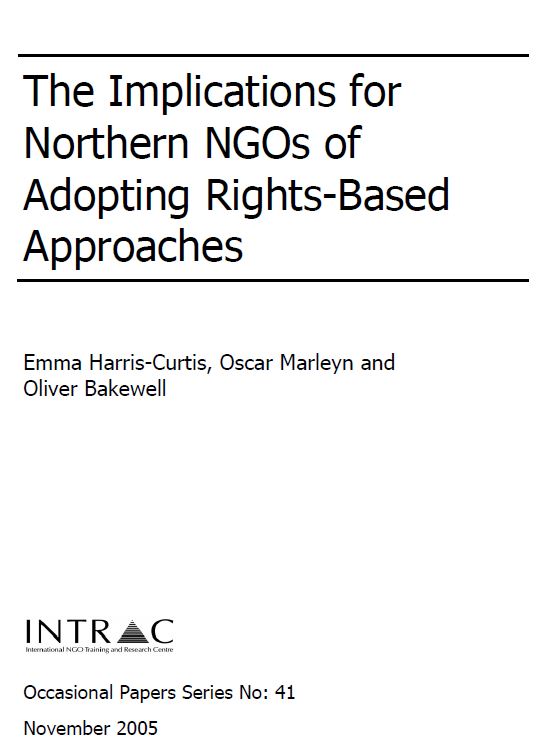 Rights-based approaches are becoming well established in the lexicon of development. NGOs, donors and other development actors are talking about them and many have explicitly adopted them in their work. Others are in the process of adopting them. For many others, rights-based approaches remain a mystery and they are still working out their response to them. The environment of development practice is rapidly reaching the stage at which any serious player must at least have a position with respect to rights-based approaches.
Rights-based approaches are becoming well established in the lexicon of development. NGOs, donors and other development actors are talking about them and many have explicitly adopted them in their work. Others are in the process of adopting them. For many others, rights-based approaches remain a mystery and they are still working out their response to them. The environment of development practice is rapidly reaching the stage at which any serious player must at least have a position with respect to rights-based approaches.
The structure of the paper is framed around INTRAC’s model of organisations made up of three interlocking circles which represent: i) the nature the organisation (its mission, values, strategy etc.); ii) its activities (programmes, policies etc.); and iii) its relationships (with communities, donors, public etc.). We show how adopting a rights-based approach is affecting these different aspects in Sections 4, 5 and 6. Before getting there, we first highlight some of the factors which have brought together human rights and development discourses and pushed rights-based approaches to the fore (Section 2). Section 3 outlines the different interpretations of rights-based approaches which have been adopted by NGOs, and their relationship with legal standards and ‘needs-based’ approaches. In conclusion (Section 7), we try to bring together some of the broad issues which emerged in this research and highlight some of the many questions which remain unanswered.
Download:
OPS-41-Implications-for-Northern-NGOs-of-Adopting-Rights-Based-Approaches
.pdf (0.45mb)
Contact Us
If you have any questions or need more information about our work, please contact us:
- +44 (0)1865 201 851
- info@intrac.org